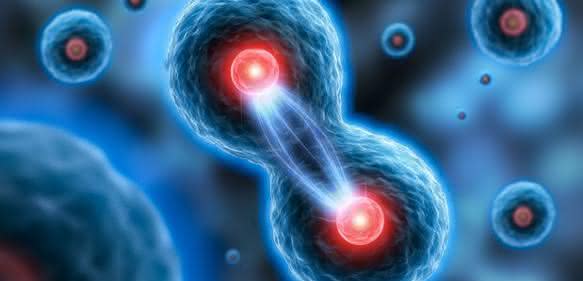
Views: 18
Researchers at Chalmers University of Technology have shown that it is possible to evoke a shift in the metabolism in microbes, from fermentation to respiration. This information can be used to design new, improved cell factories.
Courtesy by Chalmers University: Knowing how microbial cell factories generate and consume energy and how proteins are allocated to do so is crucial when working with industrial fermentations. Now, researchers have shown that by optimising fermentation conditions it is possible to induce a shift in the metabolism from fermentation to respiration of the bacteria E. coli and baker’s yeast. This shift means that the cells can be pushed into producing more internal energy (ATP).
The more ATP – the better the cells perform
Cells constantly generate high-energy molecules called ATP from the sugar glucose. ATP is the cellular “food” consumed by the workers – enzymes – within cells. The enzymes use this energy to build biomass or do other cellular work. The more ATP available, the better the microbial workhorses perform in fermentations; at least in principle – many other aspects play a part as well.
“In this study, we modeled and analyzed two main ATP-producing pathways in E. coli and S. cerevisiae (baker’s yeast), enabling us to understand how cells produce and use energy in response to various conditions. Based on these results, we will be able to find solutions to increasing ATP production, which can potentially improve cell growth and fitness under stressful conditions”, says Yu Chen, Postdoc at the division of Systems Biology in the Department of Biology and Biological Engineering at Chalmers.
Together with Jens Nielsen, Professor at Chalmers University of Technology, Sweden, and Scientific Director at The Novo Nordisk Foundation Center for Biosustainability at DTU in Denmark, Yu Chen has studied the metabolism of E. coli and baker’s yeast by using mathematical models and biological experiments. The research has now been published in Proceedings of the National Academy of Sciences (PNAS).
Shift the natural balance
Using a computational approach, the researchers found out that ATP can be generated by either of two pathways: in E. coli there is a high-yield respiratory pathway resulting in 23.5 ATP’s per glucose molecule and a low-yield pathway, which only generates 11 ATP’s per glucose molecule.
The two pathways supplement each other, but the researchers were able to shift the natural balance between the two by changing the conditions of the fermentation and the amount of sugar and protein available. Furthermore, they showed that the high-yield pathway needs more protein mass than the low-yield pathway for consuming glucose at the same rate.
Avoid build-up of unwanted byproducts
They also showed that making some key enzymes perform better meant that the cells changed from doing low yielding fermentative metabolism to breathing through the high yielding respiratory metabolism. This shift both results in more intracellular ATP, but also avoids the build-up of fermentative byproducts; acetate in E. coli and ethanol in baker’s yeast.
“These byproducts are unwanted and decrease the yield of the sought-for molecules you want to produce in your cell factory,” says Jens Nielsen.
Furthermore, the investigators showed that cells performing their best used both pathways, not only the high yielding one, and that more proteins available meant more efficiency in a given pathway.
So, the solution to better performing cells in fermentations is not to switch off the fermentative pathway, but rather to allocate more protein to the high-yielding pathway.
“Three ways to improve cell growth”
The researchers solely exposed the microbes to different fermentation conditions and did not do genome engineering to evoke these changes. But at the same time, their studies gave an indication of how one can change the cells’ metabolism by genome engineering to become more effective in future experiments.
“In conclusion: Based on our analyses, we proposed three ways to improve cell growth, and possibly also fitness under industrial fermentation processes. The first two are increasing protein mass of energy metabolism and decreasing ATP demand for growth, which can be achieved by adaptive laboratory evolution approaches. The third way is to increase activity for key enzymes, which can be done by protein engineering approaches,“ says Yu Chen.
COMPARING CELLS TO CARS
Overall, this analysis points out three ways to improve growth:
- Increasing the amount of protein. This study shows that increasing the amount of protein available to cells gives better metabolism in fermentations. In cars, this would correspond to having a quick fuel uptake, meaning that the motor would run smoothly and function optimally.
- Decreasing the cells’ demand for ATP. The scientists also showed that cells having a lower need for energy means optimized use of the energy available. In cars, this corresponds to driving more miles on the same amount of fuel.
- Increasing activity of key enzymes. In this paper, the team also showed that increasing activity of key enzymes in metabolism gave optimized ATP production through that specific pathway ‘occupied’ by those extra active enzymes. In cars, this corresponds to having the most horsepower, which means you will get from A to B faster with a higher top speed.
Read the article “Energy metabolism controls phenotypes by protein efficiency and allocation” in PNAS
Text: Anne Wärme Lykke, Anders Østerby Mønsted, Susanne Nilsson Lindh
Leave a Reply